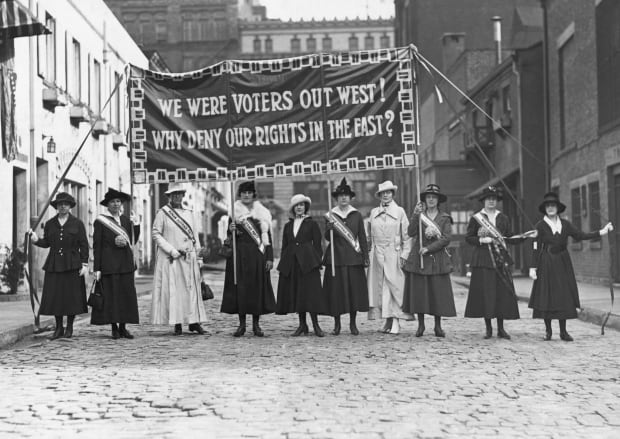The women’s suffrage movement was a decades-long fight to win the right to vote for women in the United States. It took activists and reformers nearly 100 years to win that right, and the campaign was not easy: Disagreements over strategy threatened to cripple the movement more than once. But on August 18, 1920, the 19th Amendment to the Constitution was finally ratified, enfranchising all American women and declaring for the first time that they, like men, deserve all the rights and responsibilities of citizenship.
The campaign for women’s suffrage began in earnest in the decades before the Civil War. During the 1820s and ’30s, most states had extended the franchise to all white men, regardless of how much money or property they had.
At the same time, all sorts of reform groups were proliferating across the United States—temperance leagues, religious movements, moral-reform societies, anti-slavery organizations—and in many of these, women played a prominent role.
Meanwhile, many American women were beginning to chafe against what historians have called the “Cult of True Womanhood”: that is, the idea that the only “true” woman was a pious, submissive wife and mother concerned exclusively with home and family.
Put together, all of these contributed to a new way of thinking about what it meant to be a woman and a citizen of the United States.
In 1848, a group of abolitionist activists—mostly women, but some men—gathered in Seneca Falls, New York to discuss the problem of women’s rights. They were invited there by the reformers Elizabeth Cady Stanton and Lucretia Mott.
Most of the delegates to the Seneca Falls Convention agreed: American women were autonomous individuals who deserved their own political identities.
“We hold these truths to be self-evident,” proclaimed the Declaration of Sentiments that the delegates produced, “that all men and women are created equal, that they are endowed by their creator with certain inalienable rights, that among these are life, liberty, and the pursuit of happiness.”
What this meant, among other things, was that they believed women should have the right to vote.
http://www.crusadeforthevote.org/woman-suffrage-timeline-18401920
Source: https://www.history.com/topics/womens-history/the-fight-for-womens-suffrage#:~:text=The%20women’s%20suffrage%20movement%20was,the%20movement%20more%20than%20once.

